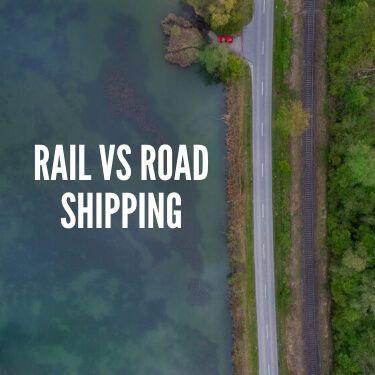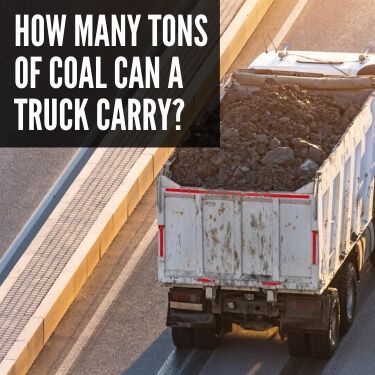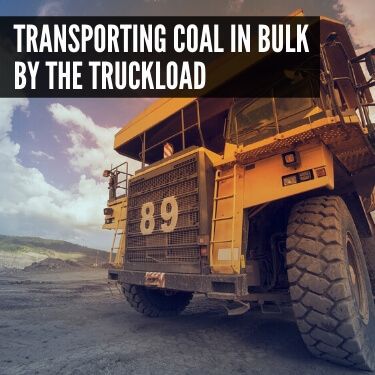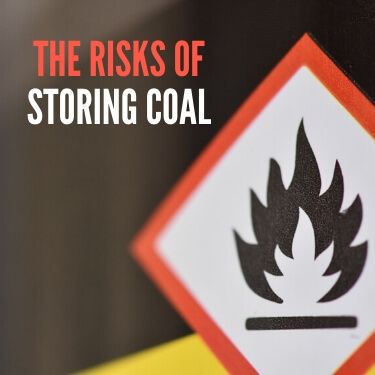Coal transportation by truck might seem unconventional, but there are actually many situations in which coal would need to be transported on a truck instead of a railcar. After all, trains and cargo ships can’t go everywhere, so if you need to ship coal to a retailer or packaging plant that isn’t close to a railroad or port, then you’re going to need to utilize freight trucks to get it there.
Coal transportation by truck is a fairly simple process, but you need to pay close attention to legal weight limits for different kinds of freight trucks. In addition to that, coal may spontaneously combust if left in storage for too long, so you should take necessary precautions to mitigate that risk.
Pennsylvania has a rich history in regard to the coal industry. Coal mining in the state began in the mid-1700s in a mountain dubbed “Coal Hill” across the Monongahela River from the city of Pittsburgh. That hill is now known as Mount Washington, but back then, it played a large role in why the city had become colloquially known as “Smokey City.” By the 1830s, more than 400 tons of coal was burned every single day, clouding the sky in Pittsburgh with the black smoke. Then, in 1902, General Electric opened the first AC power plant in Pennsylvania, leading to the state’s development as a national leader in energy production.
Coal is still a huge player in Pennsylvania’s economy. With almost 18,000 people employed in coal mining and coal supply chain jobs in the state, the industry provides security for a large population of people and contributes over $7 billion in economic activity each year. The coal industry is still going strong, and despite alternative energy sources starting to compete with it, it manages to make up roughly a third of all energy generated in the U.S.
There are two main types of coal that are mined in Pennsylvania. Bituminous coal is the most common type of coal, and it can be found all throughout the South-Western part of the state. Anthracite is a rarer type of coal that can be found in the mountains to the east, and it has a higher percentage of carbon than bituminous coal. This higher percentage of pure carbon means that the coal burns hotter, making it a more efficient energy source. Anthracite is also commonly referred to as “hard coal” and bituminous is often called “soft coal,” but that has nothing to do with the actual relative hardness of the different coals.
In 2017, Pennsylvania produced over 47.2 million tons of bituminous coal and 2.8 million tons of anthracite. With numbers like those, Pennsylvania earns its place as the 3rd top coal-producing state in the U.S., behind Wyoming and West Virginia. Illinois and Kentucky are also large players in the coal mining industry.
Need help with freight shipping from Kentucky to Florida? What about freight shipping from Wyoming to Florida? See how an expert partner can help move freight down these busy routes.

Most of the time, coal moves directly from mines to power plants via the U.S. rail system. Many coal mines are close enough to the railroads to simply load the rail containers up on the spot and send them directly to the nearest power plant. This system works quite well—until you need to get your coal shipped anywhere else. Rails don’t cover every inch of the U.S., so if you need to ship your coal to a packaging plant or retailer that isn’t on the railroad, then suddenly your rail system doesn’t work perfectly anymore. You will need to utilize freight trucks to get around the restrictions that rail presents.
However, there are a few other reasons why you might want to consider using freight trucks. Here are some of the primary benefits of using freight trucks instead of rail:
However, freight trucks cannot do everything. There are a few ways in which rail could be a better option. Take a look at some of the benefits of using a rail system for transportation:
Both of these options have their fair share of drawbacks as well. Trucks are more susceptible to accidents and traffic jams for example, while rail transportation is slow and inflexible. However, if you combine the two freight shipping options, you could end up with a great solution for shipping coal long distances.
When you use this type of intermodal transportation, you can take advantage of the benefits of both truckload and rail shipping. Trucks will carry the coal to the railroad in an intermodal container, where it will be loaded onto the rail. Using an intermodal container makes it easy to move the freight from the truck to the rail without unloading the freight. Then, the coal is transported by rail as close as it can conveniently get to the delivery location, where it is picked up by another truck to finish the journey.

Despite truckload shipping being a great option for shipping coal, you will still need to account for their smaller capacity. You will never be able to carry the same size load on a truck as you would on a single connected freight train, but how much weight can a truck actually carry? Well, there are two types of trucks that are responsible for transporting coal, and both have different load capacities and uses.
The first kind of truck is called a haul truck, and it is a rigid dump truck that is used for transporting coal on the quarry. Haul trucks are not legal to drive on regular roads and highways, but they can transport large quantities of coal to a railroad if it is not far away. Haul trucks come in a number of different sizes, but most have an average capacity of between 40 and 100 tons.
Haul trucks can get much larger than that, however. An entirely different class of haul trucks, called “ultra class,” have an exponentially larger capacity. Ultra class haul trucks can carry between 400 and 500 tons. To support all that weight, the tires are often 2 or 3 times taller than the average man!
The other kind of truck that is often used to carry coal is a common freight truck. Freight trucks can be fitted with a container that is open only at the top to allow for coal to be loaded onto it. Unlike haul trucks, these are safe to drive on public roads and highways, but there are some specific weight requirements that they need to meet in order to be considered legal. To give a simple answer, freight trucks have a maximum weight limit of 80,000 pounds, or 40 tons. But the answer is more complicated than that.
While it is true that a freight truck cannot exceed 80,000 pounds, that is the absolute highest number for the absolute largest truck. In reality, different trucks will have different requirements depending on how many axles they have. If a truck has single-axles, each axle can support up to 20,000 pounds (or 10 tons) or weight, as long as the axle centers are spaced no more than 40 inches apart. Tandem axels are those whose centers are spaced between 40 and 97 inches apart, and can support up to 34,000 pounds (or 17 tons).
However, no matter how many axles a truck has, and regardless of the type, it can’t ever exceed 80,000 pounds (40 tons) with a divisible load. Having a truck that is any heavier than that on public roads without good reason can cause significant wear on the blacktop, and even collapse bridges. With that said, a shipment with a non-divisible load can be moved on public roads, but it must comply with different regulations. A shipment of coal would never be allowed to ship as an oversize load since it would always be possible to split the load onto multiple different trucks.

Bulk shipments are defined by a large volume of goods being shipped loosely, without packages or containers. A large truck or shipping container is filled with the product, such as crushed stone, grains, or in this case, coal. Those goods are then transported to a processing plant or packaging facility, where they may be manufactured into something else or divided into smaller packages.
In order to ship coal in bulk by the truckload, you will first need to secure the load. The top of the truck is open to make it easy to dump in the coal, but that poses a problem once the truck starts moving. With the top exposed, loose rock and chunks of coal could fly out and hit other cars, endangering lives. Even if large chunks do not fall out of the truck, the exposed coal could produce a large amount of dust that could be dangerous if inhaled.
To secure the top of the truck or shipping container, you will need to get a sturdy tarp—usually made of vinyl or kevlar—to position over the exposed coal. The tarp should have a number of holes or D-rings to secure it to the truck with strong cables or straps. Using a waterproof material also has the added benefit of keeping out rain and other weather conditions that could damage or add weight to the load.
Another easy way of transporting coal by the truckload is by splitting the bulk shipment up into smaller, more manageable containers. This process can be helpful if the load is being delivered to more than one destination. It is also an option for transporting coal to retailers after it has been packaged at a different location.
In the case of coal, the commodity is typically bagged in either woven plastic or paper bags, which need to be sturdy enough to hold the weight of the coal and potentially withstand getting hefted around and stacked on. These bags can then be palletized to make it easier for warehouse workers to load and unload them onto the back of a truck. A palletized, break-bulk shipment of coal can then be shipped either as a full truckload (FTL) or less-than-truckload (LTL), which opens up more possibilities for coal shippers.
If this is how you choose to ship your coal, you need to be extremely careful about how you palletize the shipment. First, you need to understand that the carrier company or 3PL you work with will not palletize your freight for you, so it will be your responsibility. You need to do it properly because if a problem arises in shipping because of the way the commodity was palletized, you won’t be able to get refunded for damages.
To palletize bagged freight, you will need to acquire a standard-size pallet (48” x 40”) to begin. Then, when stacking the bags on the pallet, start with one layer at a time. Lay down the first layer of bags, and make sure to adjust them so they lay flat to make stacking easier. When you lay the second layer down, stagger it so that the edges of the bags don’t line up with the edges of the bags below them. This adds structural integrity to the pallet. Keep adding layers like this until the pallet reaches 4,600 pounds or 77 inches tall (6’5”). Your pallet cannot exceed those measurements, otherwise, it will be considered too hazardous to move.
Once you have your pallet stacked as high as you need it to be, without exceeding 77 inches, then you need to add a durable plastic wrap around the entire outside. Use the plastic wrap to hold the bags together as a stable unit, but be sure to also use the plastic wrap to attach the shipment to the pallet. Nylon straps can also be used to secure the bags to the pallet if you think it is necessary. Whatever you choose to do, make sure that you do not block the forklift holes in the pallet, otherwise, you would counteract the benefits of palletizing the shipment in the first place. Some carriers may even refuse to move goods that have not been palletized correctly, so do not take this step lightly.

Any time a commodity is shipped in bulk or otherwise high quantities, there is almost always a time when that commodity has to sit in storage for some time. Usually, some basic warehouse space and a little extra investment is all that is required to accommodate that, but there is a hidden danger involved with storing coal long-term.
If coal is stored for too long in temperatures that are too warm, then it will begin to oxidize. As the coal oxidizes, it gives off heat, lowering its quality and making it a less efficient heat source. If this heat is allowed to build up as a result of negligent storing and care, then the coal may self-ignite. This not only ruins the commodity, but it also creates a serious risk of fire and produces a thick smoke that could be harmful to breathe if it is not vented out of the enclosed space.
To prevent this, always ensure that your stored coal is kept in a cool and dry environment. If the coal will be sitting for some time, have the pile turned over manually to vent out any heat that could build up in the center of the pile or container. Even if the coal won’t be in storage for very long, you should always monitor the storage conditions to make sure that the proper temperature is maintained.
Coal transportation by truck is a big job, and it should be left to experts to make sure nothing goes wrong. If you’re looking for a company to help you move your shipment of coal, look no further than R+L Global Logistics! Not only do we offer expedited ground shipping through the entire continental U.S., but we also offer intermodal shipping options to get your coal to and from railroads. With our network of reliable, vetted carrier partners, you can trust that your shipment will only be handled by qualified experts in the field.
In fact, we offer a range of different services to help you ship anything anywhere with ease:
If you have coal to transport, don’t just let it sit around. Call (866) 353-7178 today for your free truckload freight quote, and you could have your shipment moving in no time!
R+L Global Logistics
315 NE 14th St., Ocala, FL 34470